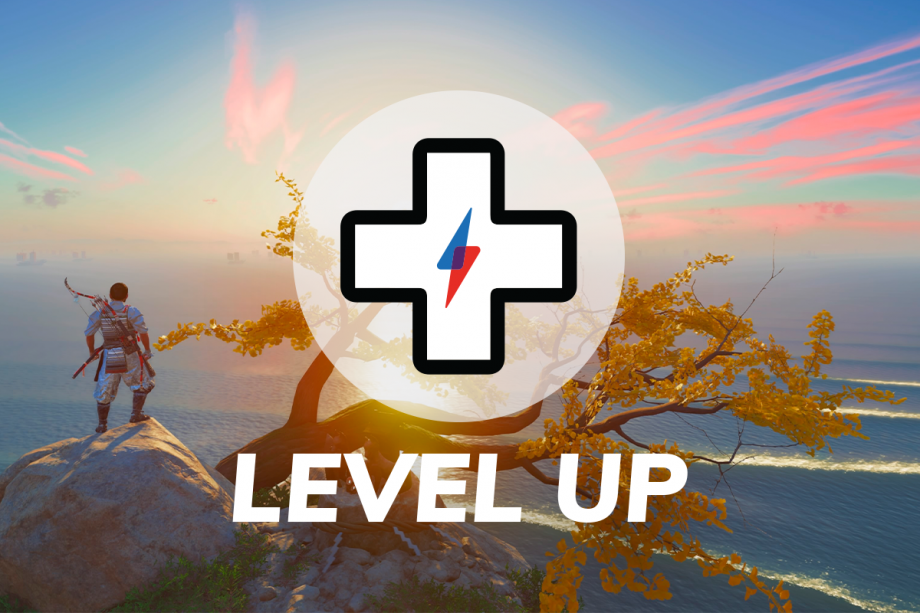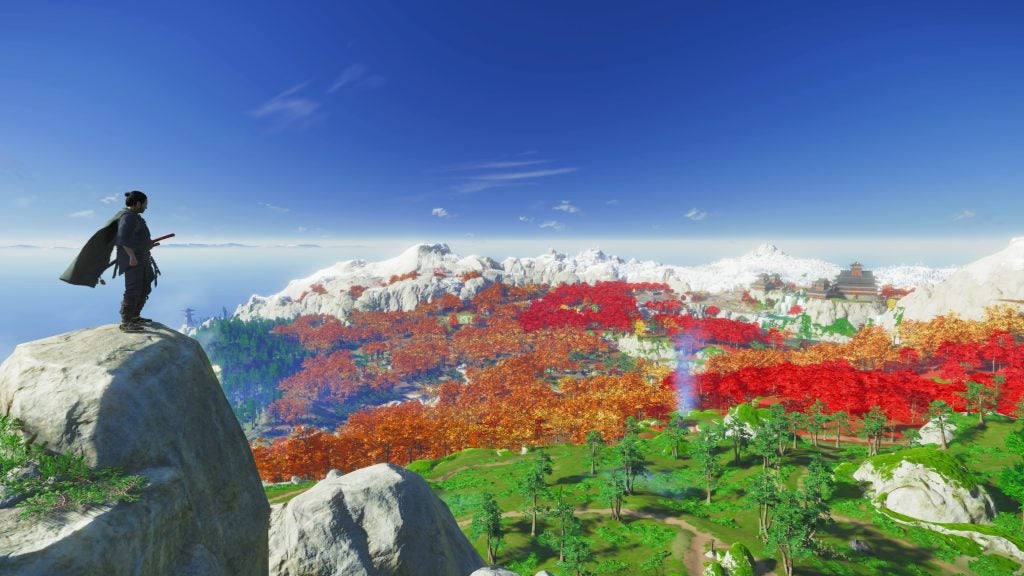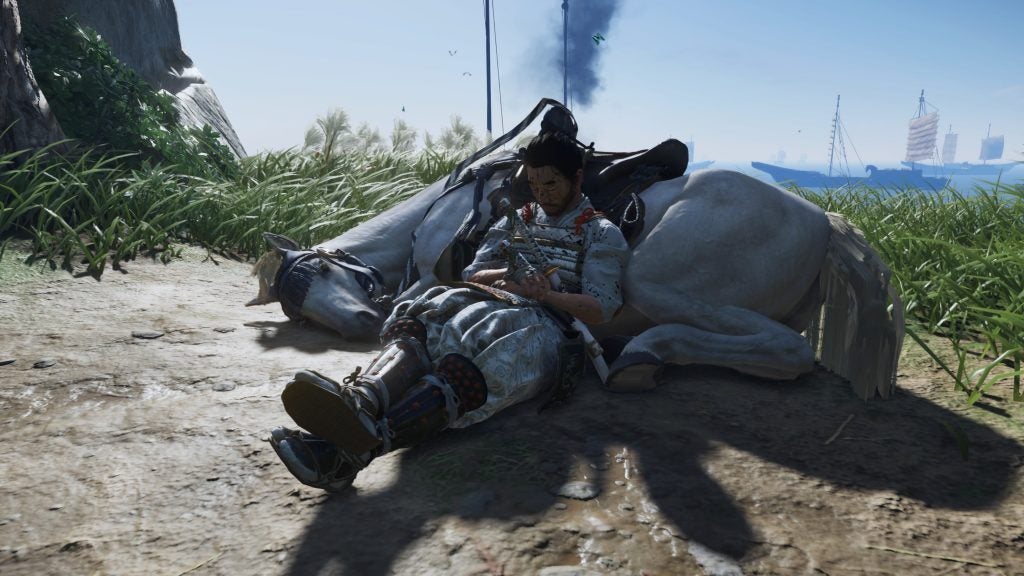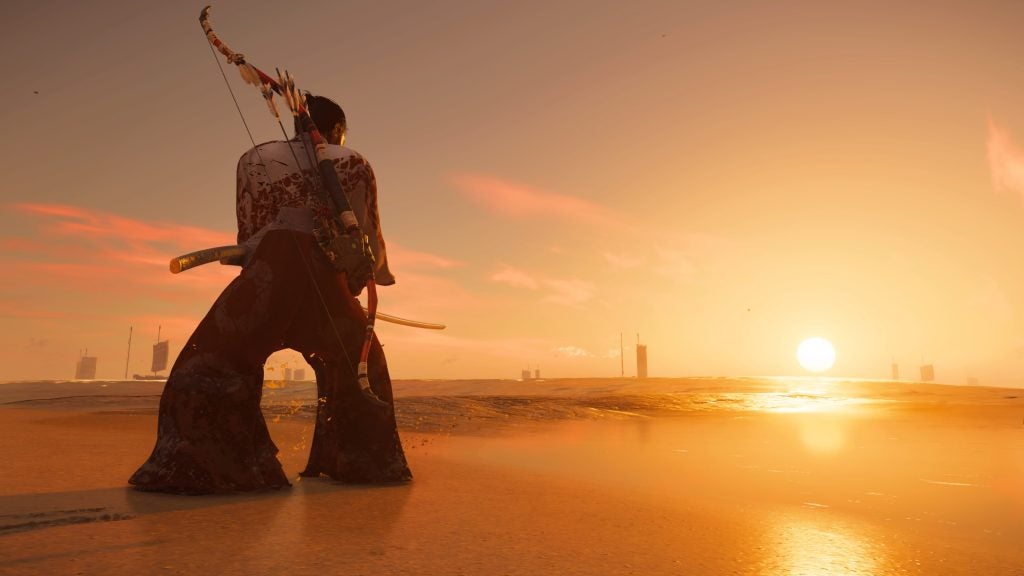Level Up: Ghost of Tsushima and the stagnation of open-world game design

Ever since Far Cry 3 released way back in 2012, open-world game design has followed a specific formula, with only a handful of brave developers moving outside this blueprint to craft something truly innovative.
At the time it was groundbreaking, providing players a reason to explore vast settings in search of rewarding activities, but it didn’t take long for flaws to slowly surface. Freeform exploration of gorgeous worlds were overlooked in favour of blindly chasing icons on the map with the aim of completion, with players seldom given a reason to discover things on their own terms.
The Legend of Zelda: Breath of the Wild and No Man’s Sky are a couple of rare examples which ventured outside of established norms, adding a newfound sense of life to proceedings by designing its worlds in a way which encourage blind discovery. Regardless of where you are, a surprise awaits around every corner which rarely needs to be signposted by an obnoxious marker.
Related: Upcoming PS4 Games

Sony is especially guilty of this design philosophy, with Horizon Zero Dawn, Marvel’s Spider-Man and, most recently, Ghost of Tsushima all feeling largely homogenous in their wider formula. You explore a vast, gorgeous world as a character who grows more capable throughout the campaign, clearing the map of side activities while progressing through the main narrative.
Despite launching six years after its last outing, Infamous Second Son, Ghost of Tsushima follows many of the same conventions established by the genre for almost a decade. You play as Jin Sakai, a young Samurai who finds himself growing in capability throughout the lengthy campaign. He grows from a fledgling warrior into an unstoppable force of nature capable of cutting down enemies in a matter of seconds.
Aside from the change of setting and combat mechanics, much of this can be applied to Second Son. You play as a young superhero who slowly but surely earns a greater repertoire of powers before finally participating in a final showdown. Throughout the adventure, you’ll familiarize yourself with a growing world filled with side activities to uncover. Before long, much of this grows repetitive.
Related: Best PS5 Games

You could apply this path of progression to countless open-world experiences in the past generation, simply swapping out the world and protagonist in favour of something different. A number of adventures are triumphant in their storytelling and visual execution, but fall victim to design conventions which feel predictable within minutes. It’s a shame, and robs a number of experiences of their creativity.
This isn’t to say these games aren’t good, many of them are amazing, yet stewing in a malaise of forgone expectations. Some of my favourite gaming memories come from open-world games, largely due to things that occurred naturally as I explored the world, as opposed to generic missions littered throughout the map. I can think of one great example from Ghost of Tsushima.
While exploring the opening region, I stumbled upon a lighthouse overlooking the gorgeous horizon. Near its entrance, two young women asked for my help, luring me towards a cliff where they hoped to draw my attention to a nearby boat. In the midst of this situation, an attempt to rob me goes terribly wrong, leading one woman to fatally kill the other. I draw my sword, striking down the murderer and leaving the two corpses behind.
I’m stunned, left to piece together exactly what happened myself, and what brought these two random characters into such a situation. It’s clever, procedural storytelling that I was left to discover on my terms, not through a blatantly telegraphed point on the map. Far too few games do this, and I sincerely hope the open-world genre adopts this in a wider fashion moving into the next-generation.
Related: Breath of the Wild 2

While I’m not holding out hope for Assassin’s Creed Valhalla or Watch Dogs Legion to accomplish such a feat, CD Projekt Red’s Cyberpunk 2077 could set a new benchmark for open-world design, handily arriving just as a new generation of consoles are set to dominate the zeitgeist. The Witcher 3: Wild Hunt was a stunning open-world outing which encouraged exploration on your own terms, something I’m sure 2077 will build upon in a number of fascinating ways.
The same could be said for Breath of the Wild 2, a sequel which has such a frankly stunning foundation that things can only improve from here. These are the high watermarks of innovative open-world design, and ones I hope become the norm moving forward, instead of the tiresome icon janitors which dominate the scene right now. As I said earlier, many of the games I’m criticisng are still excellent in their own right, but the spleandour of their visuals and characters are inevitably defined by a bland gameplay loop that simply won’t last the test of time.


